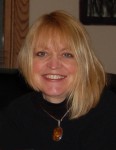Paint by Number, professional version
For those determined that art remain an elitist adventure, the original Paint by Number phenomenon of the 1950s continues to rear its ugly head in ways they may align with the stuff of nightmares. But this attitude conflicts with the proliferation of old, completed pieces on eBay, as well as at flea markets and museums (including the Smithsonian Institution).
And the 21st-century versions of PBN’s realistic images in naked-line state with mysterious numbers still promise to reveal a bona fide work of art, minus the angst of the initial thought process involved in creating a personal expression. Paint by Number persists in being a reflection of our culture in, well, expected ways.
As long ago as when the first Paint by Number set arrived on the shelves, the question for critics has been whether it stifles creativity or engages participants in an artistic experience that moves them beyond that first troubling question for all budding artists: “What should I paint?”
But perhaps more importantly, what about the individuals who create those enticing sketches, yet never fill them in? Do they feel like they’re missing something? Do they go home at night and dream of the numbers of the colors and worry if they inadvertently marked “8” instead of “3,” or of unfinished masterpieces, or if their unfinished canvases are half empty or half full?
Instead, it’s critical to Reggie that the paint be applied a la Joseph Albers or Ellsworth Kelly: with a perfectly flat, non-emotional surface. Here, it must be said, his work differs from many PBNs with their Van Gogh-esque impasto surfaces that have been cropping up in unexpected places. And looking now at the PBN my mother created during my youth, I see that a few well-placed lines and numbers could not deter her personal expression of a realistic horse’s head.
 But back to Reggie. The method of adding paint to complete Reggie’s statement is not one of creating a mock-up or testing colors on the canvas. Instead, it takes place in his mind: while observing his completed drawing, he creates a color palette, numbers the colors, and then marks each area with the appropriate number. Because Reggie reads the numbers as colors, he sees the finished painting, which at this stage would appear to neophytes as a daunting project in size and content.
But back to Reggie. The method of adding paint to complete Reggie’s statement is not one of creating a mock-up or testing colors on the canvas. Instead, it takes place in his mind: while observing his completed drawing, he creates a color palette, numbers the colors, and then marks each area with the appropriate number. Because Reggie reads the numbers as colors, he sees the finished painting, which at this stage would appear to neophytes as a daunting project in size and content.
But not his professional assistants—technicians who must be able to apply the paint as Reggie does: in thin layers. Yes, he can paint. And though lacking emotive brushstrokes, his paintings do not lack meaning. His images are rife with symbolism and narrative.
So when any PBN is picture-perfectly completed, whose work is it?
 I asked Reggie this question, and he responded that it’s his, of course. So, I conclude, we must relate his process to the creation of, say, Picasso’s “Untitled” Daley Plaza sculpture: the cor-ten steel sculpture envisioned by him was fabricated by steel professionals in the American Bridge Company. It’s still Picasso’s sculpture, right? So the final moment of illumination has come.
I asked Reggie this question, and he responded that it’s his, of course. So, I conclude, we must relate his process to the creation of, say, Picasso’s “Untitled” Daley Plaza sculpture: the cor-ten steel sculpture envisioned by him was fabricated by steel professionals in the American Bridge Company. It’s still Picasso’s sculpture, right? So the final moment of illumination has come.
For Reggie, the essence of making his statement rests in the process of drawing followed by providing the color palette/numbers for him and his assistants to follow.
Thinking about this, I return to the question about those who create the mass-produced Paint by Numbers with my answer. Perhaps there is no angst in not finishing them. Perhaps they are, ideally in both cases, jobs best left for someone else.
Valerie J. Christell is an artist and curator who teaches art history and studio art at Alverno College and is founder and director of Merge Gallery. She exhibits nationally and internationally through juried, invitational and group exhibitions, creates activist art installations and advises area arts organizations.
Art
-
It’s Not Just About the Holidays
 Dec 3rd, 2024 by Annie Raab
Dec 3rd, 2024 by Annie Raab
-
After The Election Is Over
 Nov 6th, 2024 by Annie Raab
Nov 6th, 2024 by Annie Raab
-
The Spirit of Milwaukee
 Aug 30th, 2024 by Annie Raab
Aug 30th, 2024 by Annie Raab






















